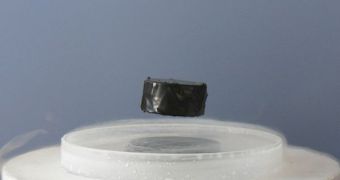The US Department of Energy (DOE) has just awarded a further $1.2 million in grant money to the National High Magnetic Field Laboratory (NHMFL) Applied Superconductivity Center (ASC), so that experts there could continue their research on one of the most promising superconductor materials ever found. The money will go towards understanding and learning how to control the new material, which could be used to create amazingly strong magnets in the new future, with a wide array of applications in many research fields, PhysOrg reports.
The Very High Field Superconducting Magnet Collaboration is, actually, the main beneficiary of the grant, which totals no less than $4 million. In charge of the research are ACS chief materials scientist and Director David C. Larbalestier, and Fermilab physicist Alvin Tollestrup. The goal of the two, and their team, is to investigate the material known as bismuth strontium calcium copper oxide, or BSCCO-2212. Other members of the team include Eric Hellstrom, Jianyi Jiang, and Ulf Trociewitz.
Superconductivity is a phenomenon that usually occurs when several types of materials are cooled to very low temperatures. Their properties change in such a manner that they allow for electrons in an electrical current to flow through them without meeting any resistance, and without loss. Regularly, energy is lost when it is converted to heat, as circuits get warmer because of the resistance force.
The material the team investigates is not such a superconductor, but a high-temperature one, which means that it exhibits the same properties as its cool counterparts, but only at high temperatures. Additionally, unlike other high-temperature superconductors, it can also be made into wires, which means that constructing magnets could become easier than ever. At this point, such magnets are made from niobium-based materials, but the BSCCO-2212-based variety could far exceed them in terms of performances.
“This material is very promising, but it’s very complex and not very strong. The DOE has entrusted us with the funds to make a broad US collaboration that directly addresses both the fundamental processing and grain boundary science of these fascinating materials and their application to new generations of magnets, both at the magnet lab and in the DOE high-energy physics laboratories,” Larbalestier says.
“This collaboration provides major DOE support toward a central goal of the National Science Foundation [NSF]. It’s a great example of multiple stakeholders working together to push high field magnet development to the next level,” he concludes.

 14 DAY TRIAL //
14 DAY TRIAL //